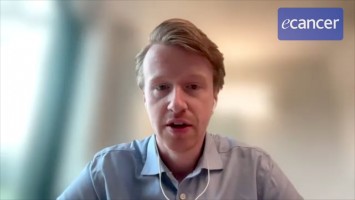One of the aims of the study was to find some, or to define, prognostic markers or prognostic factors of treatment-free remission or stopping treatment, stopping TKI, in CML Because we already published a long time ago the first trials regarding TKI cessation but now it’s important to have also prognostic factors and to do that we need many patients. One of the goals of the EURO-SKI was to include many, many patients, at least in Europe from eleven different countries, to get enough events and patients to perform a strong statistical analysis.
The other aim or the other goal was also to reproduce what we have already reported in the different clinical trials but also see a kind of evaluation of harmonised methods of molecular monitoring.
What was the design of the study?
The design of the study was to include patients, CML patients, who have been treated with TKIs for at least three years and include patients who were in deep molecular response for more than one year. In that study the identification of deep molecular response was what we say in our specialist vocabulary MR4 – molecular response at a four log reduction of BCR-ABL. In that situation this was the criteria of stopping treatment. Then the patients were followed every month at the beginning and then every six weeks with molecular [?? 2:34] investigation on the peripheral blood. Molecular recurrence, I mean the molecular relapse, was defined by loss of major molecular response. In that situation we decided to rechallenge the treatment.
What were the key findings?
The key finding is that we were able to reproduce what we have already reported on the different studies but on a very large number of patients. In other words, more than 50% of patients are still in major molecular response after stopping treatment and we reported preliminary results at six months and we published these results at six months in Lancet Oncology a couple of years ago. Now we have performed the statistical analysis on the study after 36 months, so in other words all of the patients, at least patients who have been included in the analysis, most of those patients have a minimum follow-up of more than three years, so 36 months, which was not the case as compared to the paper that we reported in Lancet Oncology.
What do you think could be the clinical implications of these results?
One of the clinical results of that study is that definitely we might be able to propose stopping treatment outside of clinical trials. We have a little bit anticipated this point because we have reported last year, at least in Europe, the ELN recommendations regarding stopping TKI. So in true life it’s possible to propose stopping treatment in patients who are in deep molecular response after TKI treatment.
The other important implication is that it’s important to continue to follow the patients a long time after stopping treatment because we have noticed that we might be able to find some molecular recurrence after six months and after 36 months as well, probably. So it’s absolutely necessary to continue to follow the patients who stop treatment a long time after treatment cessation.
One thing which is quite interesting, and in progress, is the fact that probably the molecular recurrences are really different when they are during the first six months as compared to after. In other words, probably during the first six months molecular recurrences are linked to the persistence of leukemic stem cells with a high level of proliferation. At least these leukemic stem cells are able to reinitiate the disease quite fast. As compared to the late relapses are more linked to something which is quite slow which means that maybe the mechanism of molecular recurrence could be different. That could be, for example, linked to the immune system or the immunology factors which could be modified during that period of time and that could be an explanation of the late relapse.
So clearly we have two things which are quite different – the early relapse before six months and the late relapse after six months. This is something that we are going to analyse now.








